Our first destination for the main portion of our trip was Hwange National Park, in Zimbabwe. This is the largest national park in Zimbabwe, located in the northwestern part of country, along the border with Botswana. The park began as a conservation area in 1928 and was formalized as a national park in 1961. After flying to Victoria Falls, we transferred to the park by van minibus as far as the main camp area at the main entrance to the park, which took about two hours. From the main camp, the ride in safari trucks to our camp was about three additional hours, and was technically considered a game drive, although because of the distance and the arrival of sunset, we didn't stop often or long to look animals.
 We spent three nights at the Mokalolo Plains Camp, deep inside the park, where our accommodations were semi-permanent tents mounted on cement platforms. The tents had king-sized beds, and were fully equipped with electricity and indoor plumbing (both the electricity and the hot water were solar powered). The accommodations were surprisingly comfortable, although we did appreciate the extra blankets that were available because it got quite chilly overnight. The camp did not include any fencing or other barriers to prevent animals from wandering through it, so anytime we walked outside at night, we were escorted by a safari guide, and even in the daytime, we needed to remain alert for the presence of wildlife when we moved around the camp. This would be the case for every camp we stayed in for the remainder of the trip.
We spent three nights at the Mokalolo Plains Camp, deep inside the park, where our accommodations were semi-permanent tents mounted on cement platforms. The tents had king-sized beds, and were fully equipped with electricity and indoor plumbing (both the electricity and the hot water were solar powered). The accommodations were surprisingly comfortable, although we did appreciate the extra blankets that were available because it got quite chilly overnight. The camp did not include any fencing or other barriers to prevent animals from wandering through it, so anytime we walked outside at night, we were escorted by a safari guide, and even in the daytime, we needed to remain alert for the presence of wildlife when we moved around the camp. This would be the case for every camp we stayed in for the remainder of the trip.
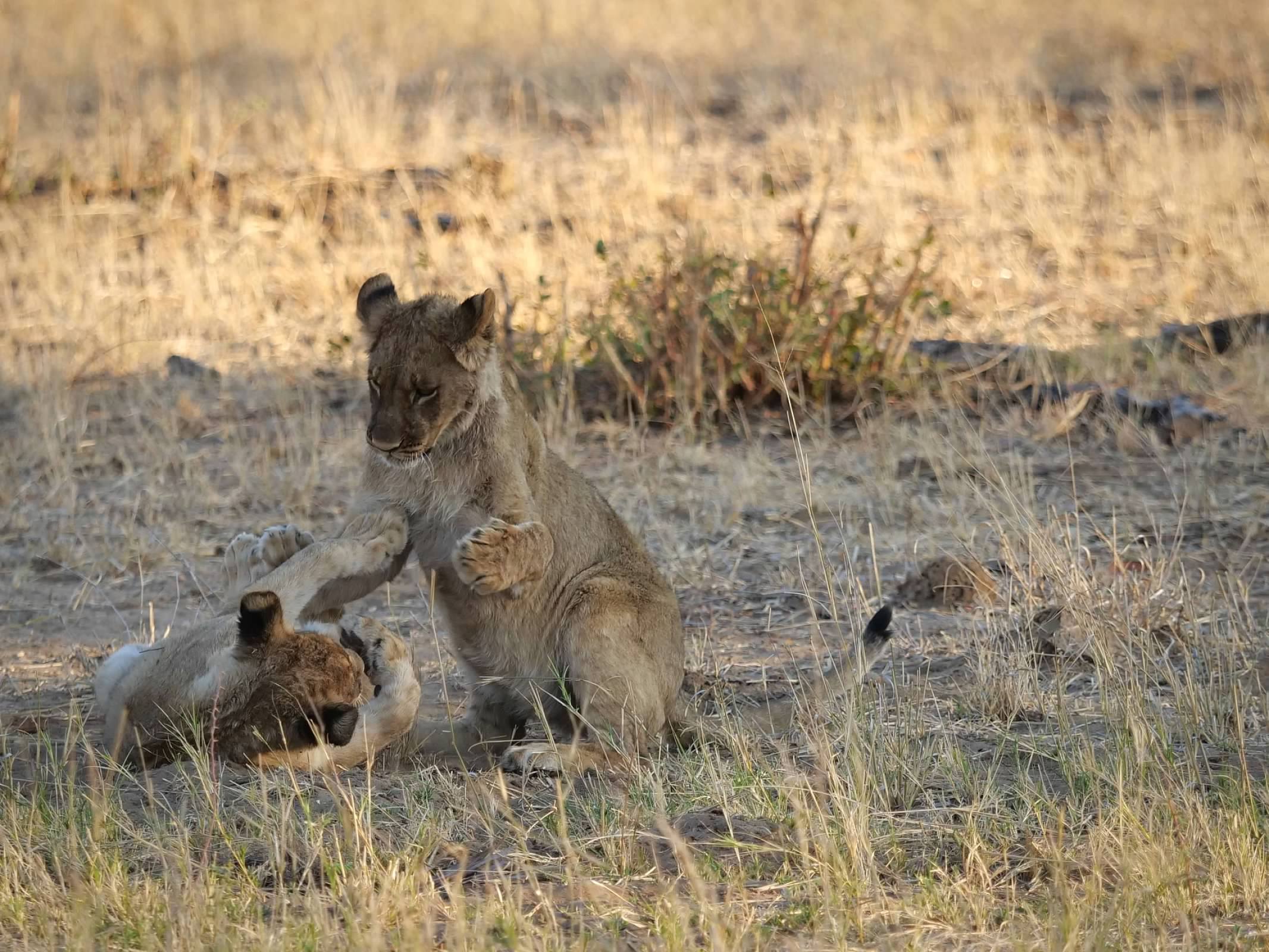
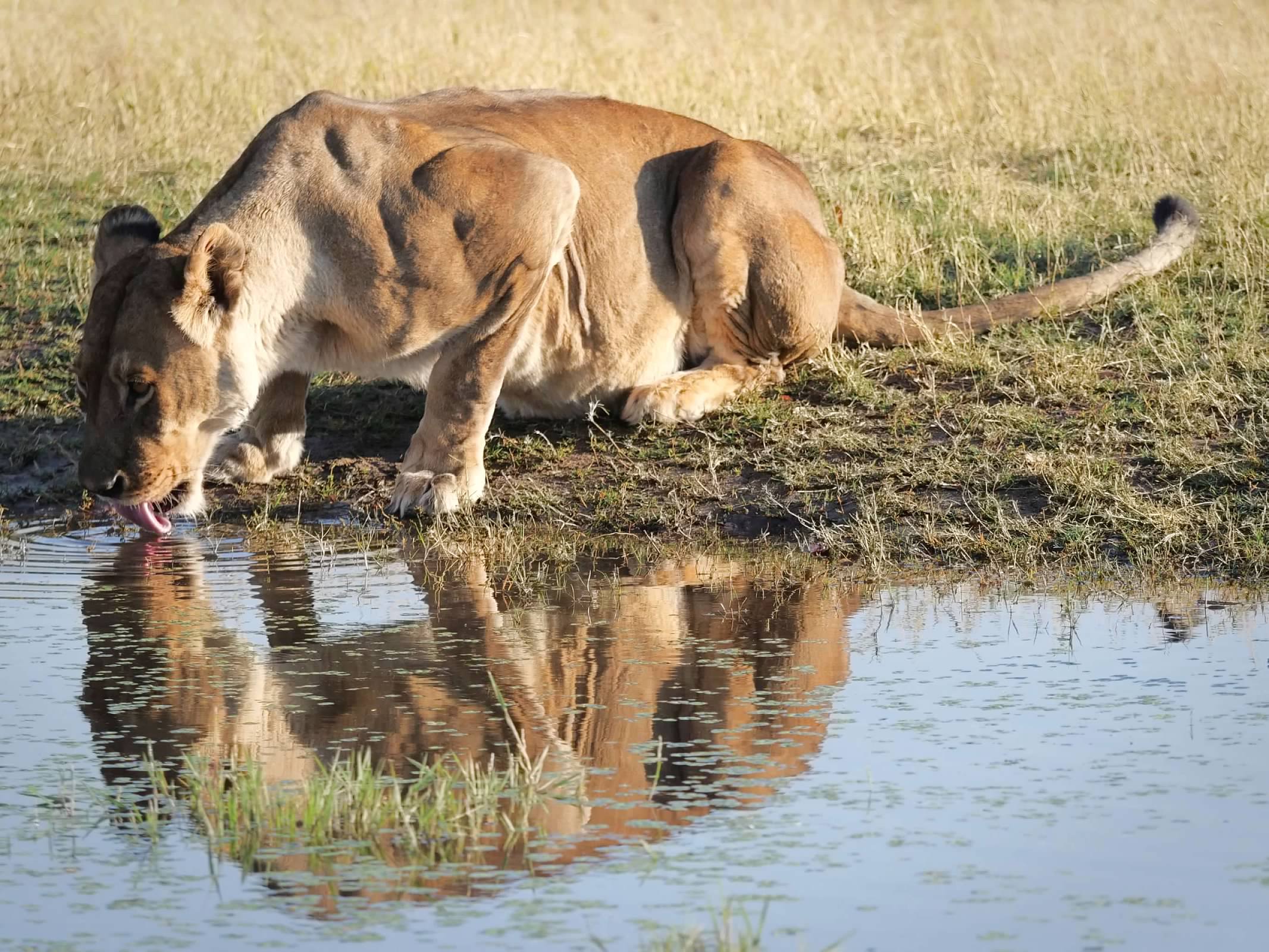

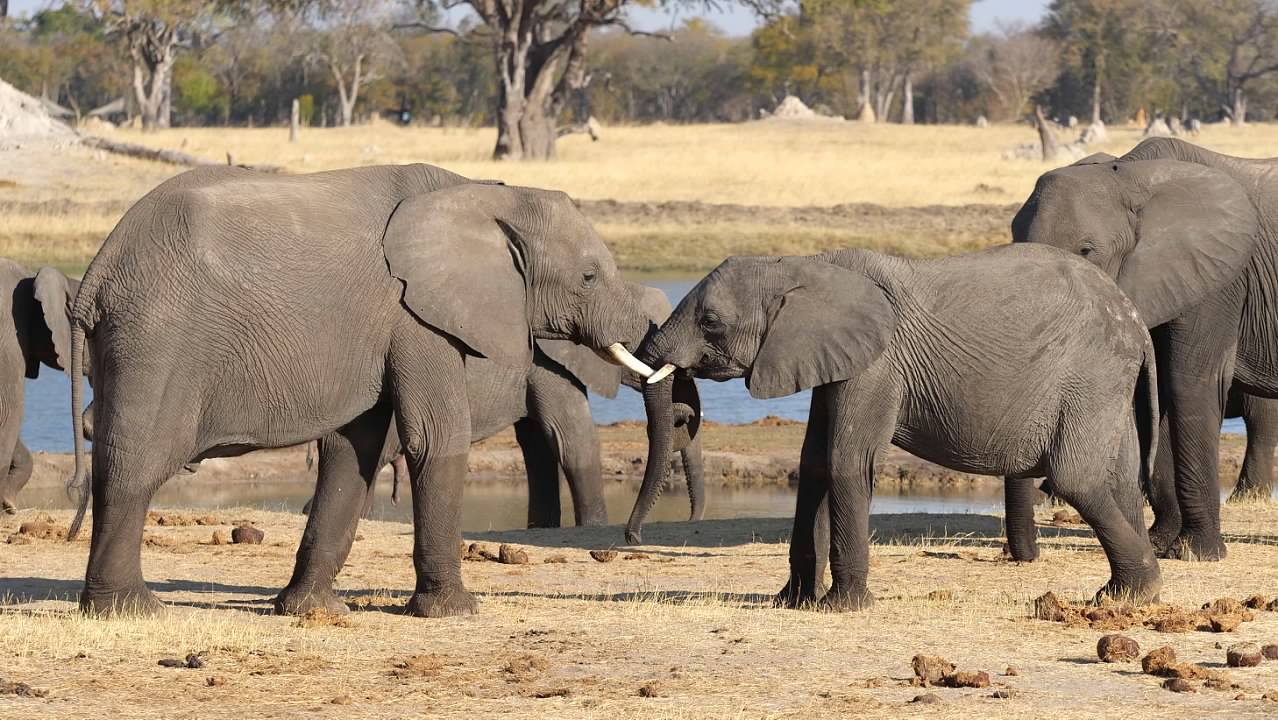
 The next day, our game drives would be done as we traveled to and from the village of Ngamo, just outside the park. Our visit to the village was a cultural experience, and we visited a local homestead in the village, where one of the village elders and his extended family demonstrated the various chores that make up their daily life and we sat down for a cross-cultural conversation over tea and snacks. We also visited the local school, where we spoke with one of the teachers and got to meet some of the students.
The next day, our game drives would be done as we traveled to and from the village of Ngamo, just outside the park. Our visit to the village was a cultural experience, and we visited a local homestead in the village, where one of the village elders and his extended family demonstrated the various chores that make up their daily life and we sat down for a cross-cultural conversation over tea and snacks. We also visited the local school, where we spoke with one of the teachers and got to meet some of the students.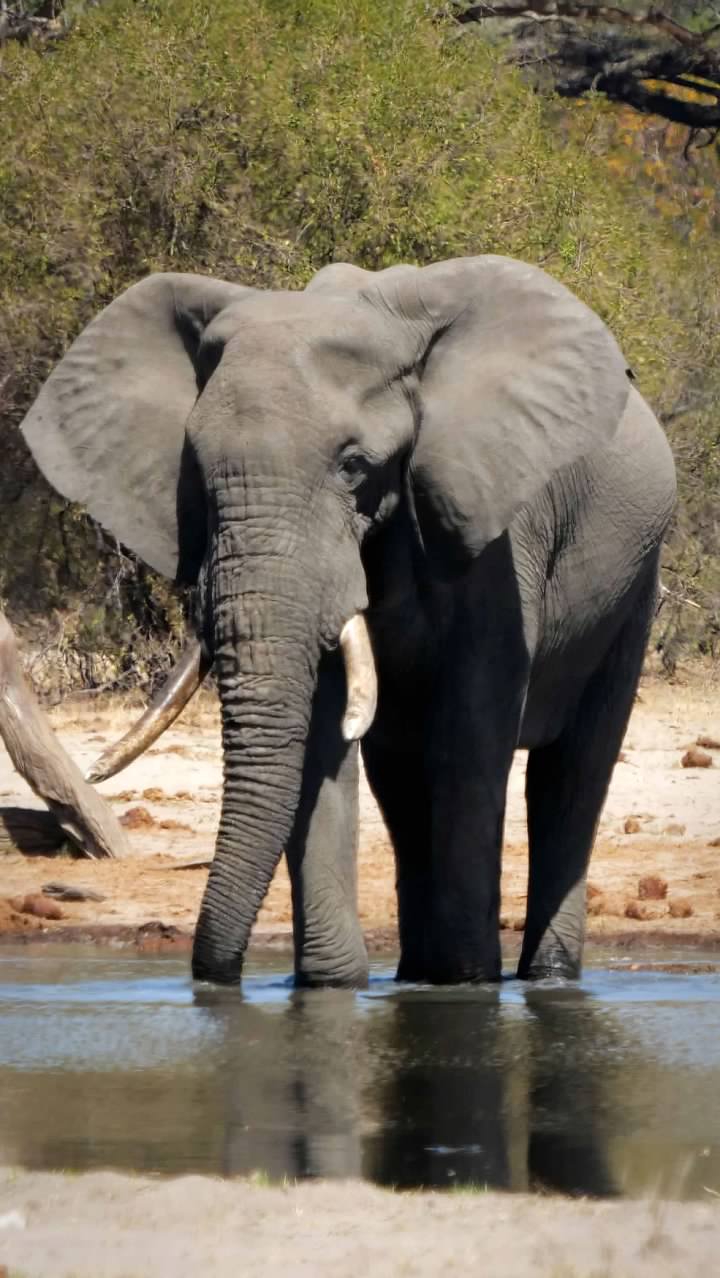
 On our way back to camp, our game drive continued, and we saw a number of animals we hadn't yet seen, including jackals and Kori bustards (the largest flying bird in Africa). Along the way, we stopped for a picnic lunch in the bush before returning to our camp in the late afternoon. By now we were becoming accustomed to the dry, dusty landscape, with its stunted and elephant damaged trees and plentiful termite mounds, which now were just part of the landscape and not something to be remarked upon, as they had been just days earlier.
On our way back to camp, our game drive continued, and we saw a number of animals we hadn't yet seen, including jackals and Kori bustards (the largest flying bird in Africa). Along the way, we stopped for a picnic lunch in the bush before returning to our camp in the late afternoon. By now we were becoming accustomed to the dry, dusty landscape, with its stunted and elephant damaged trees and plentiful termite mounds, which now were just part of the landscape and not something to be remarked upon, as they had been just days earlier.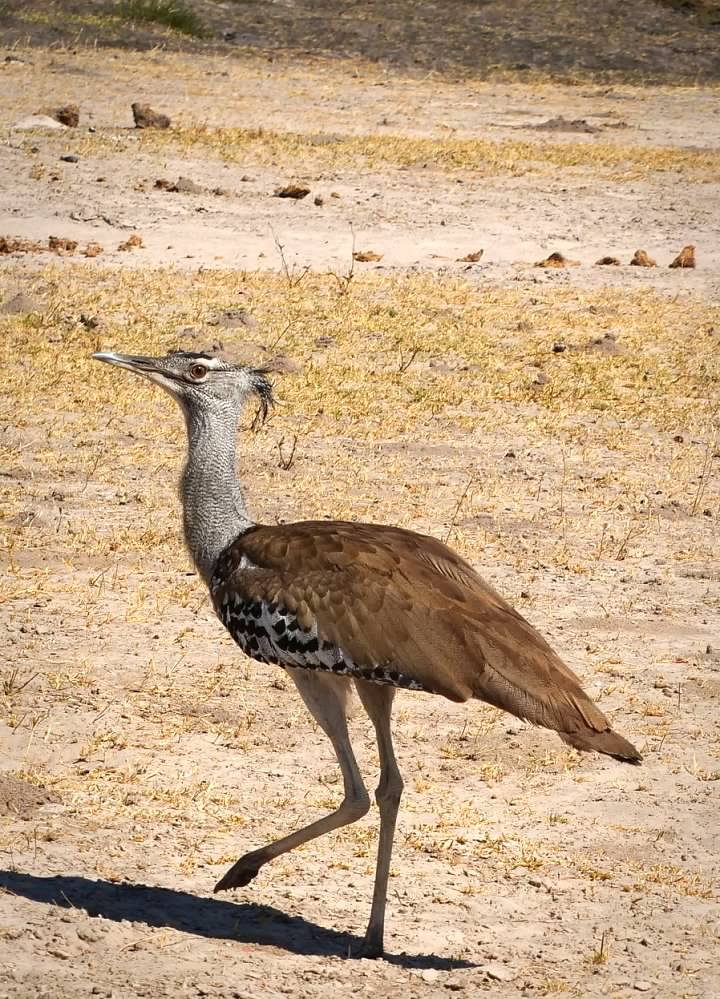
 The next morning, we packed our bags and retraced our route back through the park to the main camp area to start our transfer to our next location. Along the way we saw our first ostriches and a large troop of baboons, along with lots of zebras and giraffes. In all, it was another wonderful safari experience, but we still had more excitement in store.
The next morning, we packed our bags and retraced our route back through the park to the main camp area to start our transfer to our next location. Along the way we saw our first ostriches and a large troop of baboons, along with lots of zebras and giraffes. In all, it was another wonderful safari experience, but we still had more excitement in store.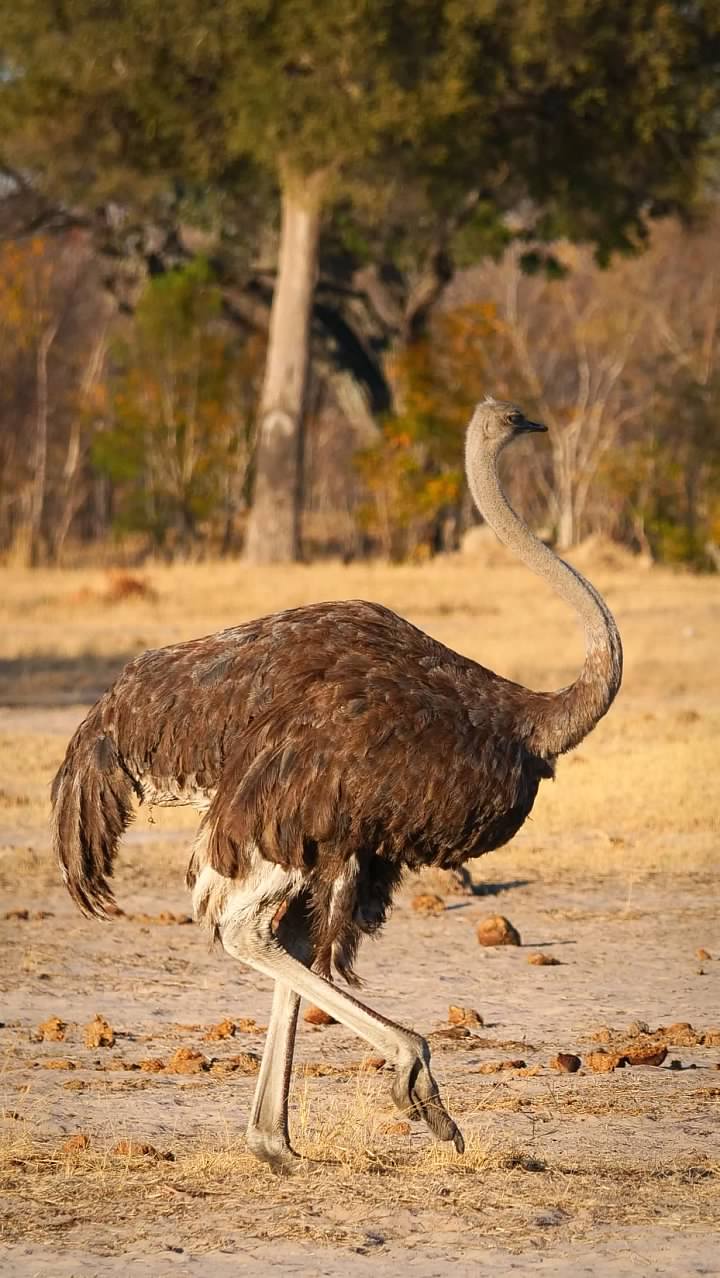
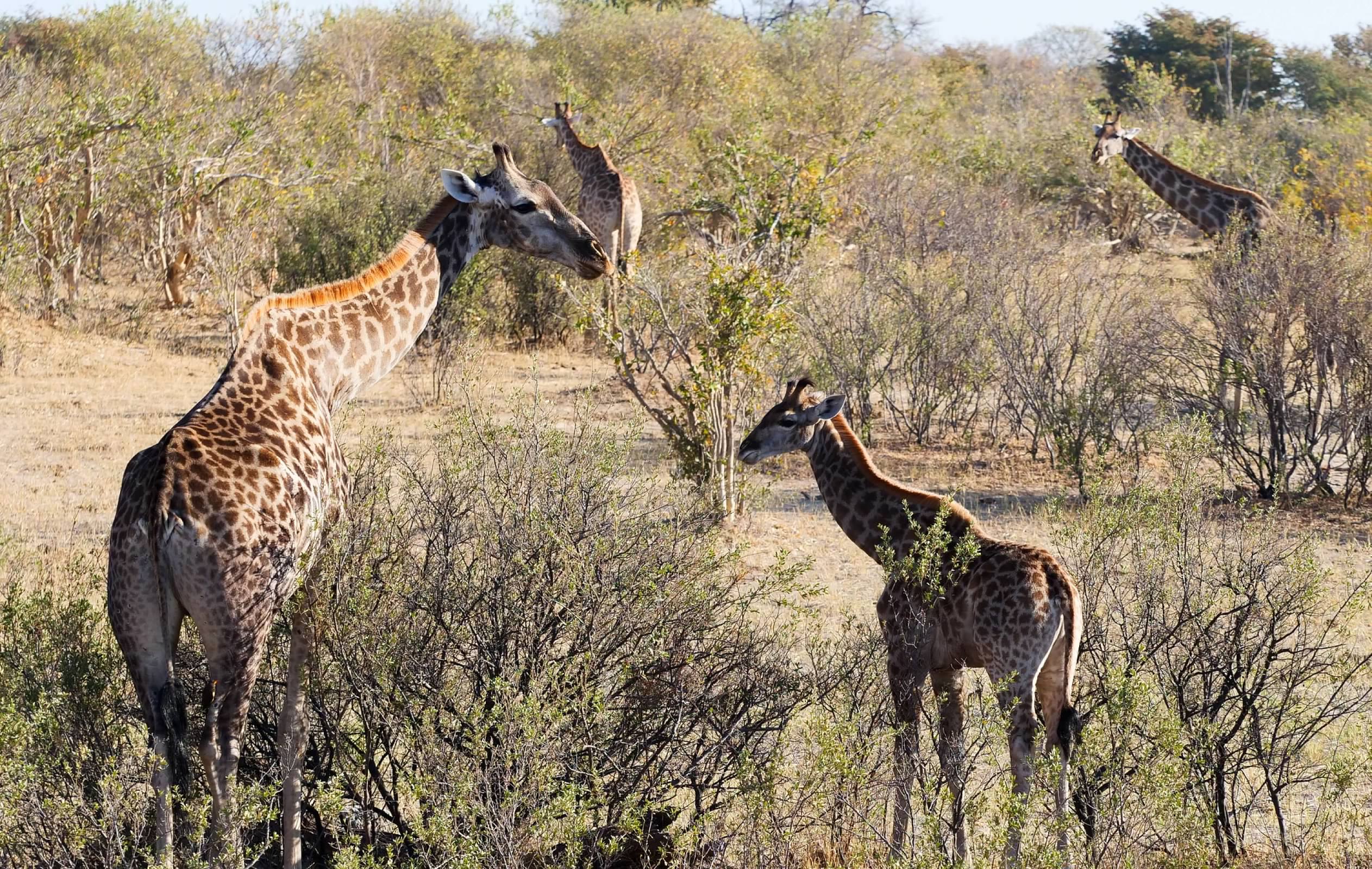
The game ride on our first morning here proved to be spectacular, allowing us to witness a pride of lions attempt to bring down a Cape Buffalo in a drama that was worthy of a National Geographic video. We found the pride of lions not even a half mile from our camp, and followed them to the watering hole right in front of our camp, where they stopped to drink. While they were relaxing there, the alpha female of the pride suddenly became alert and started walking out across the field.
Soon, two bull Buffalos came out of the bush, and the female came around behind them. As the Buffalos began to run, the rest of the pride fanned out in an effort to flank them. Eventually, the pride separated the smaller of the two and attempted, unsuccessfully, to drag it to the ground. The Buffalo managed to fight off the lions and took refuge in a watering hole, with the lions waiting on the shore, pacing, and occasionally making attempts to approach the bull. Eventually, as the sun climbed higher and the temperature rose, the lions retreated to the shade and eventually went to sleep and the bull was ultimately able to escape and run away. Our guides speculated that the lions were not particularly desperate because they had eaten recently, but had they been hungrier, the scene might have ended very differently. This entire drama played out within a mile or so of our camp!
That afternoon, we returned to the same watering hole to find a very different scene. The pride of lions was still resting under the tree where we had left them earlier, but now the watering hole was surrounded by a large herd of elephants, along with some zebras and antelope. We spent some time watching the elephants, and observing their complex social behavior. Eventually, we heard that another truck had found some cheetahs, so we set off across the bush and found them basking in the evening sun. We then stopped for our sundowners next to a watering hold with hippos in it and watched yet another glorious sunset.